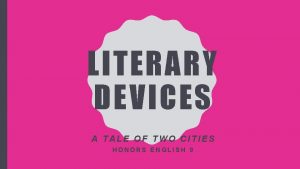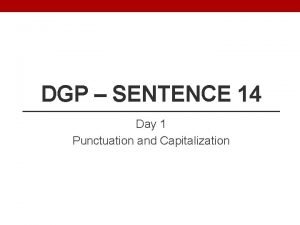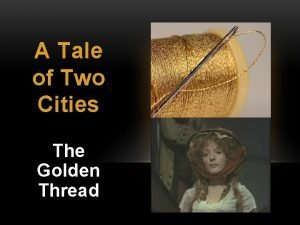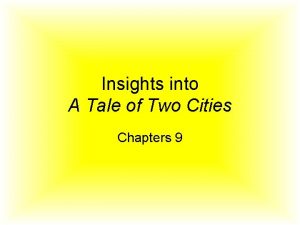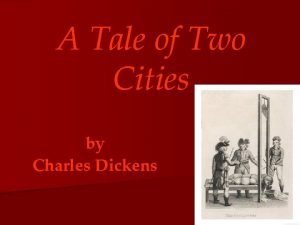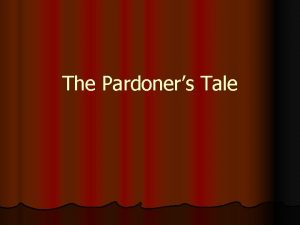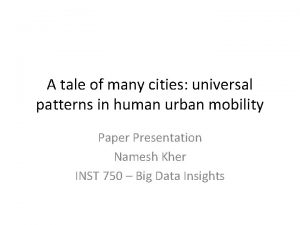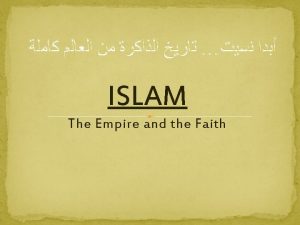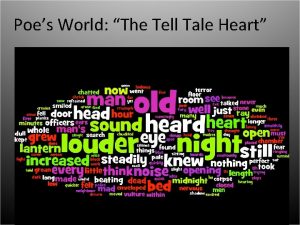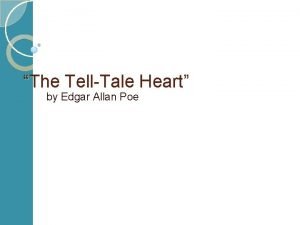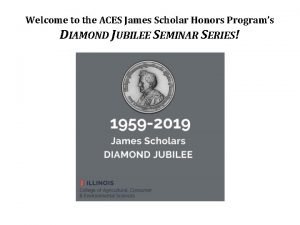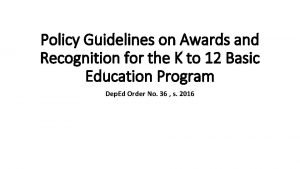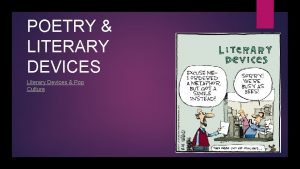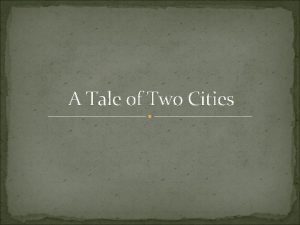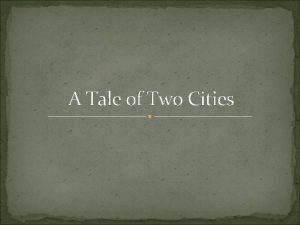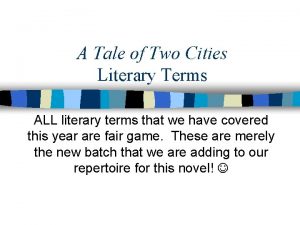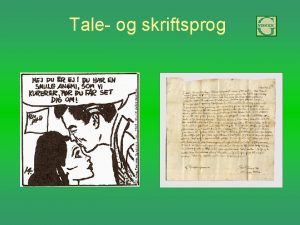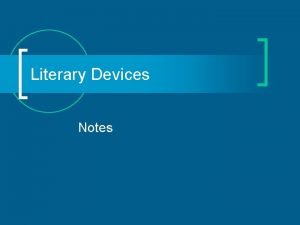LITERARY DEVICES A TALE OF TWO CITIES HONORS


















- Slides: 18

LITERARY DEVICES A TALE OF TWO CITIES HONORS ENGLISH 9

TERMS YOU SHOULD KNOW

SYMBOLISM • The use of symbols to represent ideas or qualities

PERSONIFICATION • the attribution of a personal nature or human characteristics to something nonhuman, or the representation of an abstract quality in human form

FORESHADOWING • Foreshadowing is a literary device in which a writer gives an advance hint of what is to come later in the story.

SETTING • The literary element setting includes the historical moment in time and geographic location in which a story takes place, and helps initiate the main backdrop and mood for a story.

MOOD • a literary element that evokes certain feelings or vibes in readers through words and descriptions.

TONE • An attitude of a writer toward a subject or an audience

THEME • A main idea or an underlying meaning of a literary work that may be stated directly or indirectly.

SIMILE • A comparison of two unlike things using the comparative terms “like” or “as”

METAPHOR • A comparison of two unlike things without using “like” or “as” “It’s raining cats and dogs outside!”

ALLUSION • an expression designed to call something to mind without mentioning it explicitly; an indirect or passing reference (esp. to history, culture, literature, religion, etc. )

TERMS YOU MUST LEARN

PARADOX • a statement that is self contradictory because it often contains two statements that are both true, but in general, cannot both be true at the same time.

MOTIF • Motif is an object or an idea that repeats itself throughout a literary work. • In a literary work, a motif can be seen as an image, sound, action or other figures that have a symbolic significance and contributes toward the development of theme. Motif and theme are linked in a literary work, but there is a difference between them. In a literary piece, a motif is a recurrent image, idea or a symbol that develops or explains a theme while a theme is a central idea or message. • Example: Books are a motif throughout Beauty and the Beast that highlight Belle’s personality and the relationship she has with the Beast.

ALLEGORY • a story, poem, or picture that can be interpreted to reveal a hidden meaning, typically a moral or political one.

DOUBLES • Two characters, settings, ideas, etc. in literature made purposefully similar to one another or used to highlight similarities and differences between the two.

DRAMATIC IRONY • Dramatic irony is a form of irony that is expressed through a work’s structure: an audience’s awareness of the differs substantially from that of the characters’, and the words and actions of the characters therefore take on a different—often contradictory—meaning for the audience than they do for the work’s characters. • The audience is aware of more than other characters on stage which changes the interpretations or words and actions based on that awareness.
 Literary devices in tale of two cities
Literary devices in tale of two cities In the novel a tale of two cities dgp
In the novel a tale of two cities dgp The golden thread a tale of two cities
The golden thread a tale of two cities The gorgon's head a tale of two cities
The gorgon's head a tale of two cities A tale of two cities summary
A tale of two cities summary Why is it ironic that the rioters vow to kill death
Why is it ironic that the rioters vow to kill death A tale of many cities
A tale of many cities Literary elements examples
Literary elements examples Folk tale characteristics
Folk tale characteristics Mecca is a city in ________.
Mecca is a city in ________. Short choppy sentences in the tell tale heart
Short choppy sentences in the tell tale heart Exposition of tell tale heart
Exposition of tell tale heart Creighton university honors program
Creighton university honors program James scholar program
James scholar program Deped order honors and awards 2017
Deped order honors and awards 2017 Ucsb honors seminars
Ucsb honors seminars Honors physics semester 1 review
Honors physics semester 1 review Honors biology ecology test
Honors biology ecology test 4.05 uncle sam's toolbox
4.05 uncle sam's toolbox
